Fangeek Ashley Eckstein called it first. PC Magazine said it next. Finally, Rainbow Rowell made it definitive: 2013 truly was the Year of the Fangirl. From all walks of life, fans, particularly women in fandom, spoke up to support each other, support their favorite media and stars, and demand diversity and respect from the shows and stories they love.
Being a fangirl is about finding your voice—sometimes a brave and scary prospect in a world that wants nothing better than for young women to be quiet. But finding your voice as a fan often means risking scary interactions over the fourth wall—as the mostly-female Sherlock and Supernatural fandoms both learned the hard way this year. Still, it’s not all thorny—just ask the Hannibal, Sleepy Hollow, and Welcome to Night Vale creators, who’ve been showered with flower crowns all year by fans ecstatic that they’re being listened to. Then there are fandoms like Once Upon a Time and Teen Wolf, who despite bumps in the road in 2013 are learning as they go and doing their best to listen and respect their fans.
With these pitfalls in mind, we present our list of the people who changed fandom in 2013. Each of the people below furthered the growing interaction and discourse between fans and creators in 2013, whether it was by uniting fandom in loss and love, as did the deaths of three beloved fandom actors, or in simply listening and responding positively to fandom. Sometimes, as with the beloved Hayao Miyazaki, it was through sheer artistry.
In every way, the people on our 2013 top ten list have elevated the conversation about fandom, both from within and without.
1) Rainbow Rowell
If only one voice in fandom rose above all others this year, it was undoubtedly that of introverted dreamer Cath, the protagonist of Rainbow Rowell’s novel Fangirl.
Rowell sprang to the forefront of the formidable Young Adult novelist sphere in March, when John Green wrote a heartfelt paean in the New York Times to her debut YA novel Eleanor & Park. “Its observational precision and richness make for very special reading,” Green wrote. He spoke poignantly about the social indictment inherent in Eleanor & Park, which would go on to top numerous ‘best-of’ book lists at the end of 2013.
Rowell had our attention. Here was a writer who clearly had an important contribution to make to Young Adult fiction and to literary fiction, a writer who could stand alongside Green, Robert Cormier, Lois Lowry and other authors whose work has elevated the genre—an “adult” YA novelist.
But Rowell’s next novel was no Chocolate War—or was it?
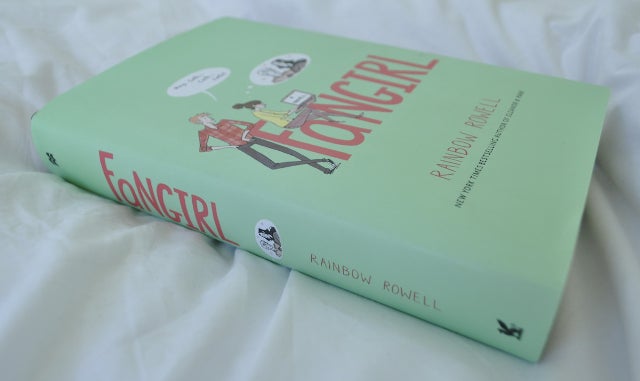
Photo via laurengetsbooked/Tumblr
Fandom is an unlikely follow-up to class divides and social inequality, but Fangirl has its own statements to make about society and storytelling’s power to shape our reality. As Cath starts college, she struggles to balance her love for fandom (and her OTP) with her real-life relationships. But unlike Barry Lyga’s Fanboy, Robert Rodi’s What They Did to Princess Paragon, and endless media depictions of fandom as something that shields fans from seeing reality and from being able to socially function, Rowell’s Fangirl sees Cath’s fandom participation as a way of connecting that much more deeply to the world. Fanfiction—yes, even, especially slash fanfiction—gives Cath the strength to face up to the challenges of her real life: everything from social anxiety and shyness to the trepidation of allowing herself to fall in love and take her first tentative steps towards writing professionally.
While some critics justly noted that Fangirl suffered from a dearth of fandom culture, what it lacked in depicting online communities, it gained in remaining unabashedly true to life. Like this writer, Rowell found freedom through reading and writing Harry/Draco fanfic and participating in the richness of online fanwork communities. Cath’s story matters not because she is special or an outlier, but because she could be any fangirl who came of age and found her voice in the context of a virtual world.
When Fangirl debuted in September, it sported a fabulous whimsical cover illustrated by fandom favorite Noelle Stevenson, a.k.a. Gingerhaze. It quickly headlined the start of Tumblr’s new community book club. It drew raves from critics and fans alike, garnering reviews in places as disparate as Entertainment Weekly and the New York Times, and ending up on the Times’ Notable Book list for 2013. For months it seemed to be the first thing anyone in my circle of fans, journalists, and authors wanted to talk about.
Had Fangirl been less honest, 2013 might have been a far less cheerful year for fandom. After a turbulent 2012 in which Fifty Shades of Grey simultaneously elevated fanfiction and turned it into the publishing world’s most polarizing subject, Fangirl was a soothing balm that everyone could agree on. Not only did Fangirl refuse to apologize for its author’s love of fanfiction, it offered a way forward, a positive compromise between the liberation of online fanwork and the call of a professional creative career. Cath’s struggle to accommodate fandom and original fiction in her life is not just a fanfic author’s dilemma, but the publishing industry’s as well. The publishing industry’s embrace of Fangirl was a breakthrough: a reminder that the divide between traditional and new media forms is not unbridgeable. We can have both.
The unspoken theme of Fangirl, beyond simply “fanfiction is transformative,” is far more important: simply, female-centered fandom is not a threat. Fanfiction vs traditional publishing; fandom vs the “real world;” the “fangirl” or the “fake geek girl” v/s established male-centered geek culture: none of these false dichotomies withstand Cath’s earnest passion and desire to connect with her culture. Fangirl vocalized an increasing awareness that on some level, all of us are fangirls. Cath’s world is our world. If 2012 was the year fans inherited the earth, 2013 was the year we watched the fans conquer.
2013 was the year of the fangirl.
2) Hayao Miyazaki
The phrase “end of an era” is often misused, but it has perhaps never applied so strongly as to the end of Miyazaki’s reign over Studio Ghibli.
To look back at the string of masterworks from this animator turned director is to be struck anew by the singular beauty and profound uniqueness of films like My Neighbor Totoro and Spirited Away. Miyazaki’s pantheon of fantastic creatures feel as if they have arisen from classic folklore and simultaneously sprung straight out of his brain. Totoro, Kodama, No-Face, the Catbus: few directors have given the world such a host of magical neighbors.

GIF via lrnlzbthchvz/Tumblr
With the possible exception of manga artist Osamu Tezuka, no other Japanese creator in decades has had a more direct impact on the reception of Japanese artistic culture across the world; it is probably no coincidence that both artists influenced Disney animation as well as each other. Miyazaki wasn’t the only Japanese animation artist who elevated anime into the realm of high art during the late 80’s and 90’s, but he was the finest. In last year’s once-a-decade Sight & Sound poll of the best films ever made, four Miyazaki films make an appearance, garnering votes from 30 of the world’s most respected critics and directors.
But perhaps more than anything, Miyazaki’s influence shows in the profound absence of anything in U.S. animation that approaches Miyazaki’s catalogue of spirited, varied and complex female characters. As the Disney princess franchise battles with criticism that it can’t even give its female characters differing facial characteristics, we yearn for the power of Princess Mononoke’s San, the wisdom of Howl’s Sofi, the spirit of Kiki.
It’s testament to Miyazaki’s irreplaceable position within his own studio that he returned to directing not long after his first attempt at retirement. But with 2013’s The Wind Rises, it seems clear that he is passing the torch at long last. The fictionalized story of real-life aircraft engineer Jiro Horikoshi, The Wind Rises depicts a man grappling with the impact of his creations upon a war-torn world. The film has more than a few obvious parallels to Miyazaki’s own career, none more striking than Miyazaki’s original inspiration for creating it—a quote from Horikoshi himself:
“All I wanted to do was to make something beautiful.”
3) Joseph Fink & Jeffrey Cranor
As well as topping the iTunes podcast chart, Welcome to Night Vale was one of the breakout fandoms of 2013. The combination of sci-fi/horror tropes, whimsical storytelling and an extraordinarily diverse cast of characters caused Night Vale to become the first major audio-only fandom to spread across the Internet — a particularly impressive feat on Tumblr, where most fandoms are at least partly reliant on GIFs. Unlike famous fandom showrunners like Steven Moffat or J.J. Abrams, Night Vale’s co-creators don’t have any real background in fan culture. Still, Joseph Fink and Jeffrey Cranor, along with voice actor Cecil Baldwin, have all taken to fandom like a duck to water.
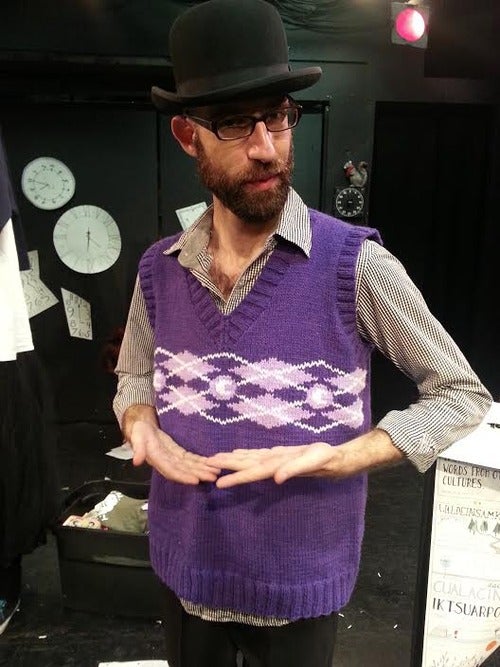
Photo via gunslingerannie/Tumblr
Not just content with endearing fans by being sharply witty on Twitter, Fink and Cranor revamped the official Night Vale website to include a webstore where fans could vote for their favourite fanart to be put on official Night Vale merchandise, with the profits being shared between the artists and the show itself. Every show on Night Vale’s live performance tour has sold out alarmingly fast, with the cast and creators seemingly overjoyed at the amount of fanart and Night Vale cosplay on display.
And they haven’t rested on their laurels. In numerous interviews, the duo have affirmed Night Vale’s commitment to diversity, and as the year wound up, they showed it. Fink and Cranor decided that it wasn’t enough to portray a POC character on their show: they wanted the part of Cecil’s boyfriend Carlos to be played by an actual actor of color as well.
Hats off, guys.
4) Mildredandbobbin
If 2013 was the year of the fangirl, then it was also the year of the fangirl standing up for herself—just ask fans of Supernatural and One Direction. It’s never an easy thing for fans to be the subject of tense interactions with creators or intense media scrutiny, but having to endure both at the same time is a nightmare scenario for many fans.
So when prominent British feminist and journalist Caitlin Moran decided to get the stars of Sherlock to read a racy excerpt from Mildredandbobbin’s JohnLock fanfic at the much-lauded fan screening for the new series, things could have gotten even worse. As a horrified Sherlock fandom found itself getting media attention after the incident, all eyes were on the fan who’d been unlucky enough to have her fic singled out for mockery. But Mildredandbobbin wasn’t out for blood; as a married mother of two, she just wanted Benedict Cumberbatch and Martin Freeman to know that she was sorry they’d been put through that discomfort, and wanted Moran to know that she would never have consented to something that mortifying for everyone involved, had Moran bothered to ask for permission.
“Thank you for humiliating me, taking my writing out of context without permission, belittling it and using it to embarrass actors who I deeply admire,” Mildredandbobbin wrote in a heartfelt response the day after the event. “Thank you for tainting the one thing sometimes that gets me through the day.”
In a rare moment for fandom, the media was generally on the side of the fans on this one. That’s in no small part to the class and grace Mildredandbobbin showed in the middle of every fanfic author’s worst-case scenario. Allegedly, Moran even contacted her to apologize.
Such is the power of the voice of the fangirl.
5) Orlando Jones
If this month’s Sherlock screening is anything to go by, the so-called “fourth wall” of fandom is still a very touchy subject. The general consensus is that actors and showrunners should respect fandom, but not get too close. And definitely not admit to reading any fanfic.
Orlando Jones is the exception that proves the rule. As soon as Sleepy Hollow began this year, he launched himself headlong into its fandom, proving himself to be far from a n00b when it came to concepts like shipping. His Tumblr account is full of nerdy photoshopped selfies and Sleepy Hollow fanart, and he generally seems more clued-in to fandom culture than the official social media reps for most TV shows. He participates thoughtfully in fandom discussions on Twitter almost every day, and even offered to appear in a commercial for Archive of our Own.
Orlando Jones doesn’t just have a healthy respect for fandom like Misha Collins or George Takei—he’s an active participant.
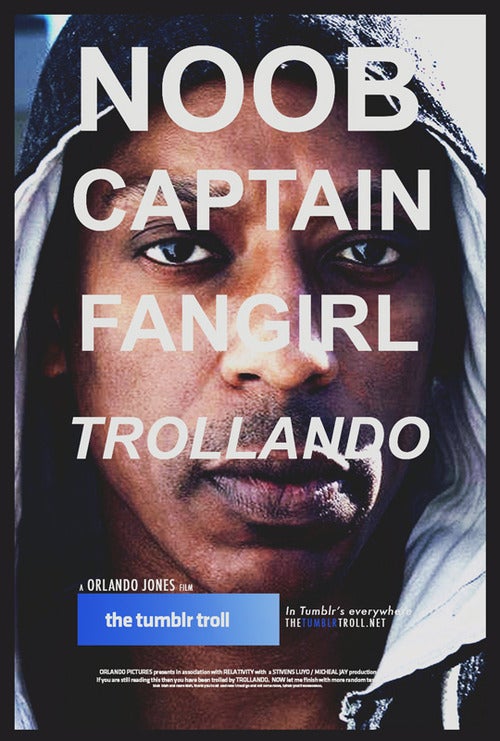
Photo via theorlandojones/Tumblr
6) Ashley Eckstein
Actress and entrepreneur Ashley Eckstein started her fashion company HerUniverse three years ago with the goal of debunking the stereotype that women could not be geeks interested in science fiction and fantasy. Eckstein, known in Star Wars fandom as the voice of Jedi padawan Ahsoka Tano on Cartoon Network’s Star Wars: The Clone Wars, took her mission a step further this year and united geek girls in an online campaign called “Year of the Fangirl.” Most geek girls have had their geek cred questioned and been called “fake” at some point in their lives, and Eckstein strived with this campaign to bring together women from all over the world to form a supportive community on her company blog and on social media. Eckstein spotlighted a “Fangirl of the Day” to show how everyday women can be geeks and gathered a team of experienced contributors to help her efforts. She also started an online advice column called “Ask Ellen” where psychotherapist Ellen Connell offers practical advice to fangirls of all ages dealing with issues of sexism, harassment, “fake geek girl” accusations, and more.
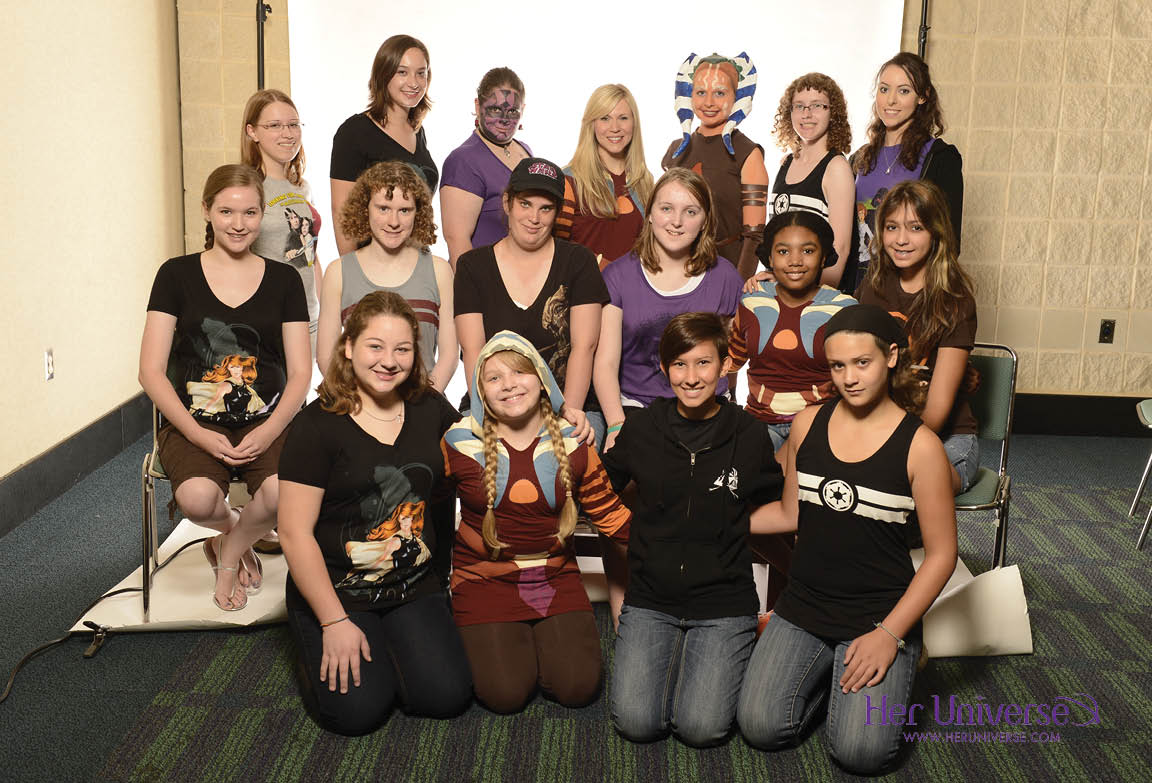
Photo via Dan Madsen/HerUniverse
As a result, a strong fangirl community has developed around HerUniverse with geeky women joining together to share their experiences, advice, and show girls they are not alone. While HerUniverse is a fashion retailer that has been successful in showing fangirls exist through retail dollars, this year it wasn’t the money where they made a difference. Their campaign efforts have made HerUnvierse a hub of fangirl support that Eckstein hopes to continue beyond 2013.
7) Cory Monteith, Lee Thompson Young, and Paul Walker
It’s rare that active, vibrant fandoms encounter shocks like the ones sustained this year with the passing of three beloved actors. The death of Glee’s Cory Monteith at age 31 saddened the world in July; barely a month later Rizzoli & Isles’ Lee Thompson Young was dead at age 29. And in November, Paul Walker, the heart of the popular Fast & Furious film franchise, died in a car accident at age 40.
What we took away from the loss, however, was the tremendous outpouring of love and support from members of the fandom community, both inside and outside the fandoms. “Tonight we are all in the Glee fandom,” went a popular Tumblr post that made the rounds the night that the Glee fandom said goodbye to Monteith’s character Finn on the show. Fast and Furious fans showed up at Walker’s crash site by the thousands, forming a respectful parade of cars that lasted for miles. And Thompson Young’s fans still flock to his Facebook memorial daily to pay their respects and remember the young star.
8) Matt Conn and the GaymerX team
Matt Conn and the GaymerX team were at the forefront of some big pushes for LGBT representation in video games this year. Their actions have given voice to the queer gaming community and shed light on many of the challenges they face, uniting LGBT and straight gamers for the cause. After the group funded the first gaming and geek culture convention with a LGBT focus with Kickstarter in 2012, GaymerX successfully took place this August in San Francisco. They supported a documentary that was filmed at the event called Gaming in Color which will also explore the community. Not satisfied with these two accomplishments, Conn launched indie game studio MidBoss Games in November to take more of a direct route in changing queer representation in games. Using Kickstarter they have already successfully funded their first game, Read Only Memories, which will feature queer characters in prominent roles and allow the protagonist to not be limited to just the “he” and “she” gender labels.
GaymerX has faced many opponents standing in the way of their efforts like the Westboro Baptist Church, but that hasn’t stopped them from striving to give a voice to this group of gamers. They plan to continue their work and will be hosting GaymerX2 in July 2014.
9) Dr. Andrea Letamendi and Dr. Robin Rosenberg
For the first time there was hard data that could dispel some of the stereotypes held against cosplayers thanks to clinical psychologists Dr. Andrea Letamendi and Dr. Robin Rosenberg. They created a one-of-a-kind online survey called “Psychology of Cosplay” to learn more about the type of people that cosplay and the psychology behind their choices. The data was first shared in October on a panel at GeekGirlCon and revealed much more than the psychological state of cosplayers, including some interesting demographics. The majority of participants were women, implying that cosplay may be one of the few areas in geek culture where women dominate, and less minorities were revealed as participating in cosplay, which brings up their possible under-representation in media.
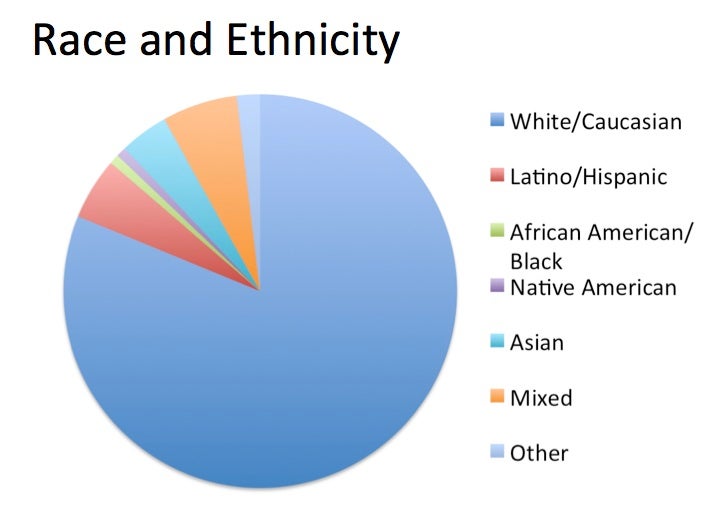
Illustration by Dr. Andrea Letamendi
Perhaps the most important aspect of the survey revealed that cosplayers are not so different from everyone else. By showing that they do not differ from the general population in terms of education, profession, or personality, Dr. Letamendi and Dr. Rosenberg gave the community proof they could present to any person who tries to point at cosplayers and claim they are stranger than everyone else.
10) Cassandra Clare
Aside from Fifty Shades author E.L. James, Cassandra Clare is the most famous author to retain direct links to her past as fanfic writer. This year, her young Adult novel Mortal Instruments: City of Bones was turned into a major Hollywood movie, bringing her fandom roots even further into the spotlight than before.
Although Clare is one of online fan culture’s most controversial figures, the level of mainstream success that she has reached has probably done more to shape the debate around fanfiction in popular media culture than that of any other novelist apart from James. And while the movie adaptation didn’t do as well as predicted—in part because movie critics largely seemed to review it as if it were Harry Potter fanfiction—it certainly hasn’t put a dent in Clare’s own book sales.
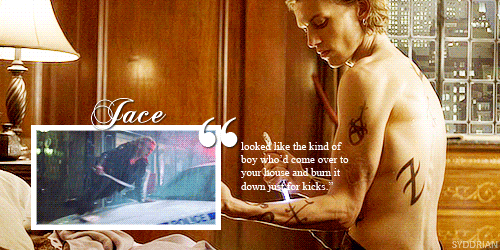
GIF via kanun-supun/Tumblr
Gavia Baker-Whitelaw and Lisa Granshaw contributed to this report.
Illustration by Jason Reed


